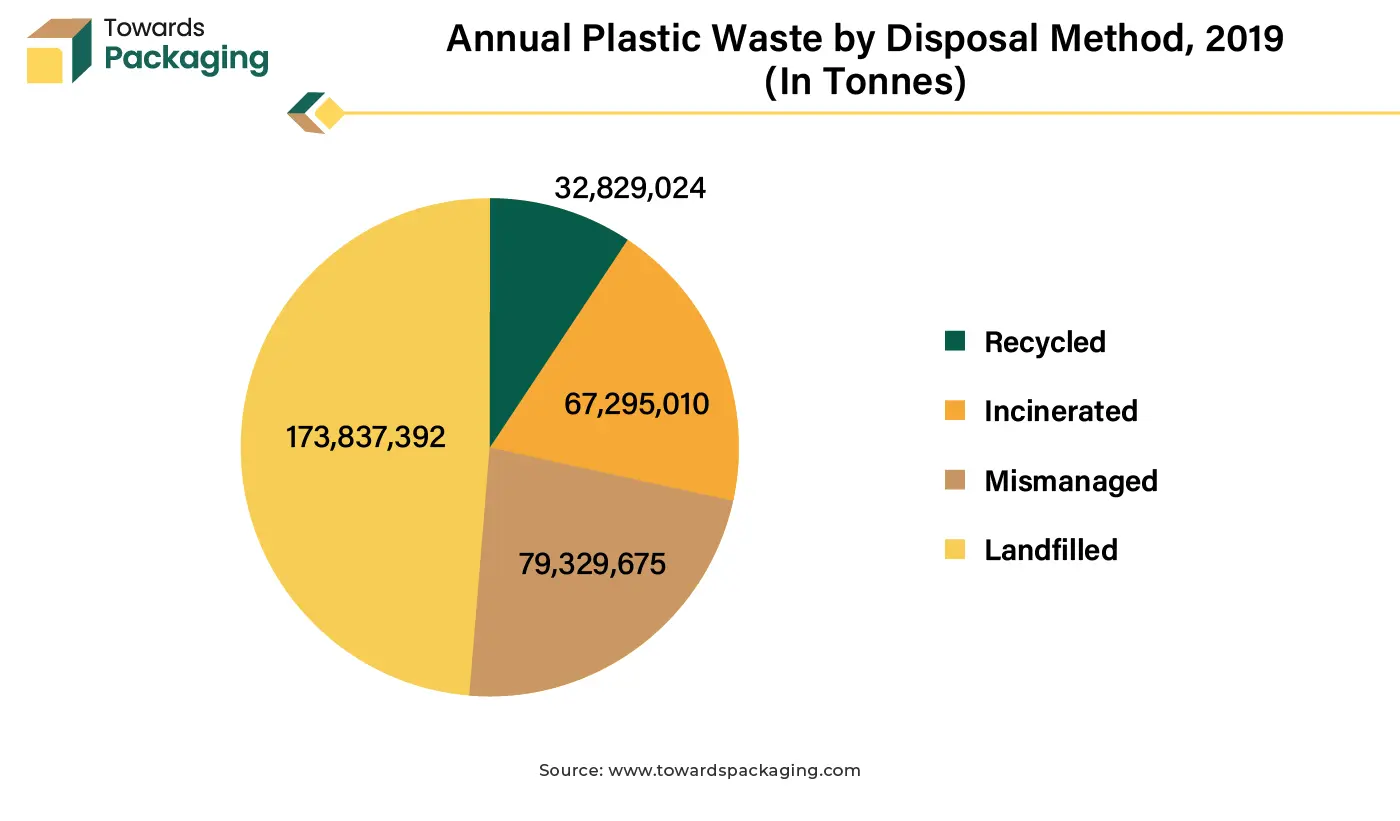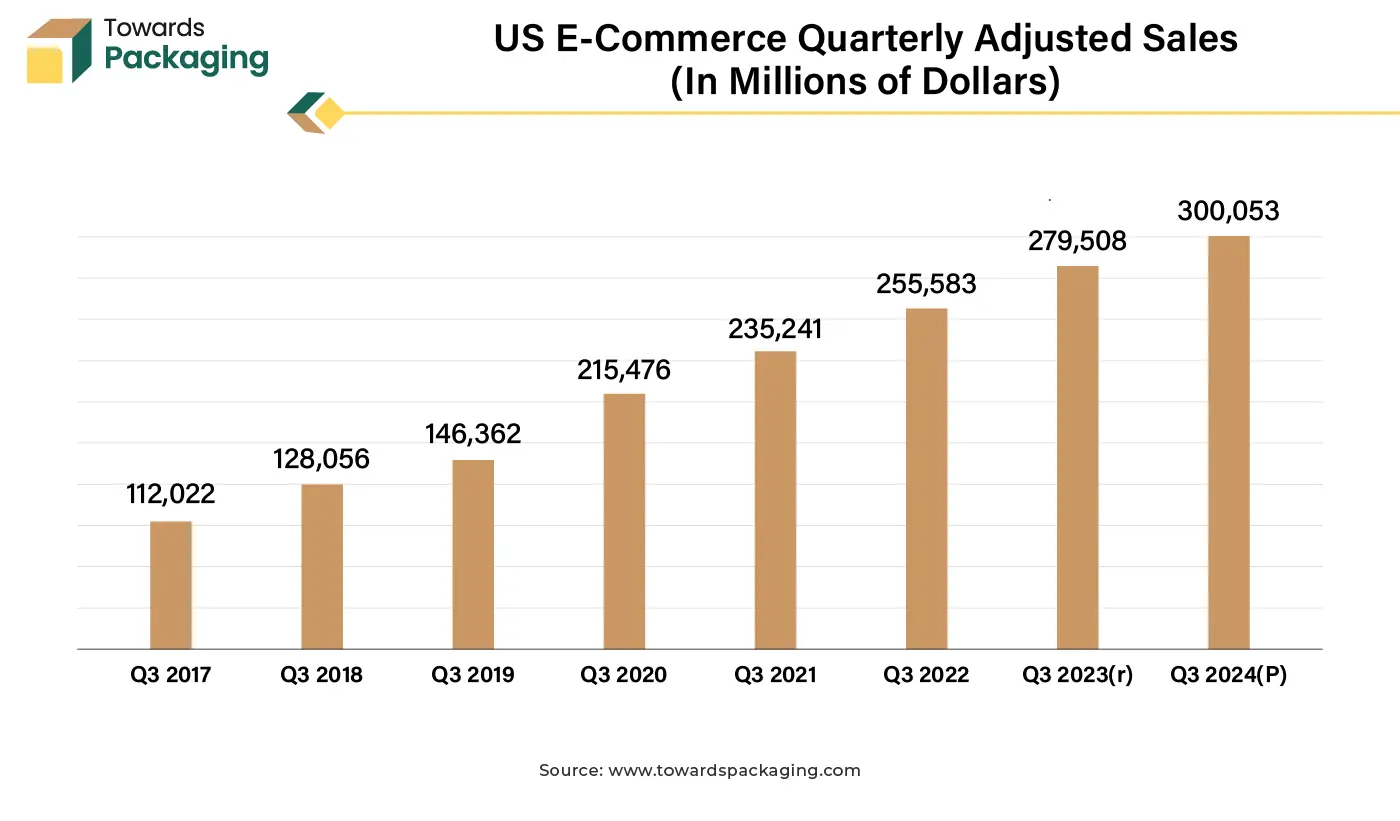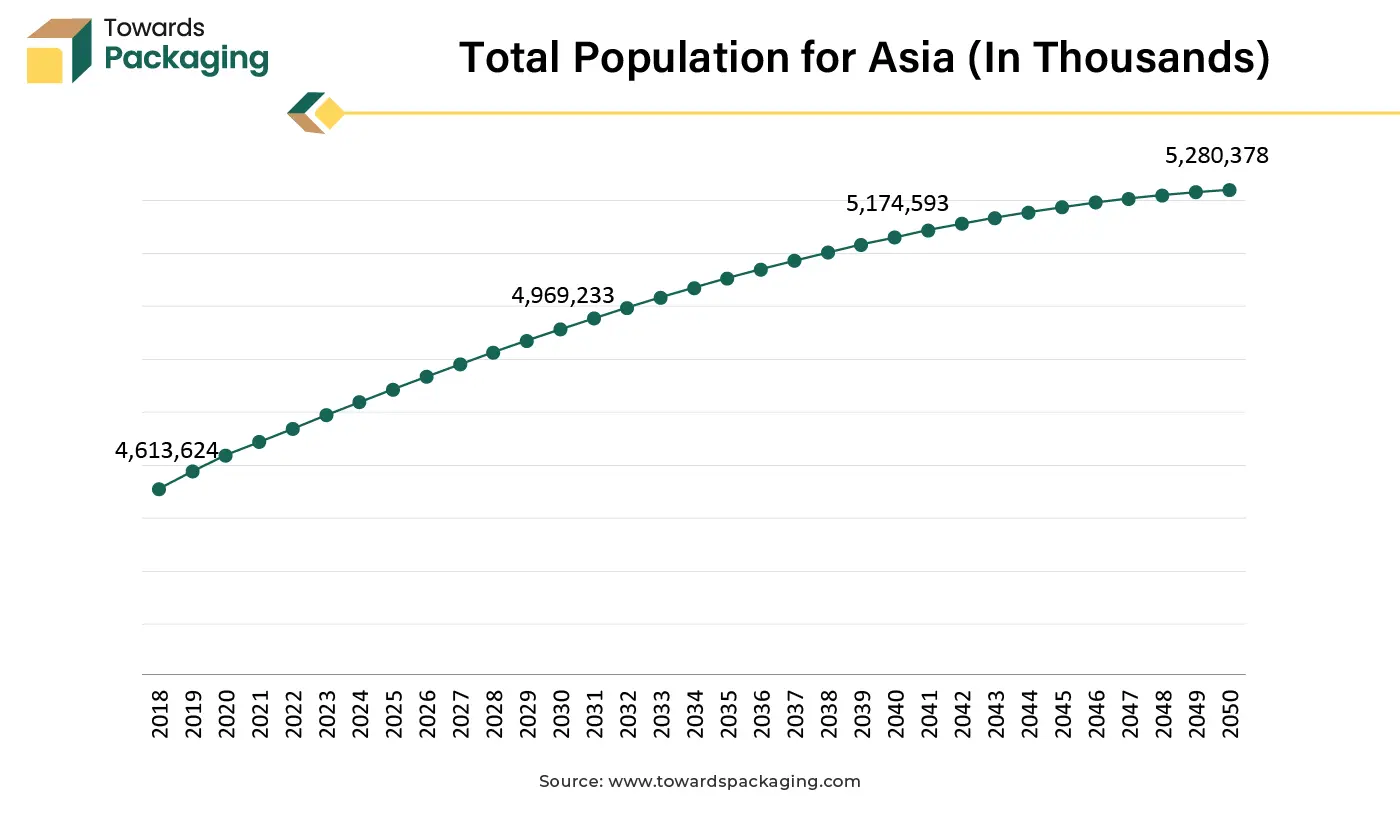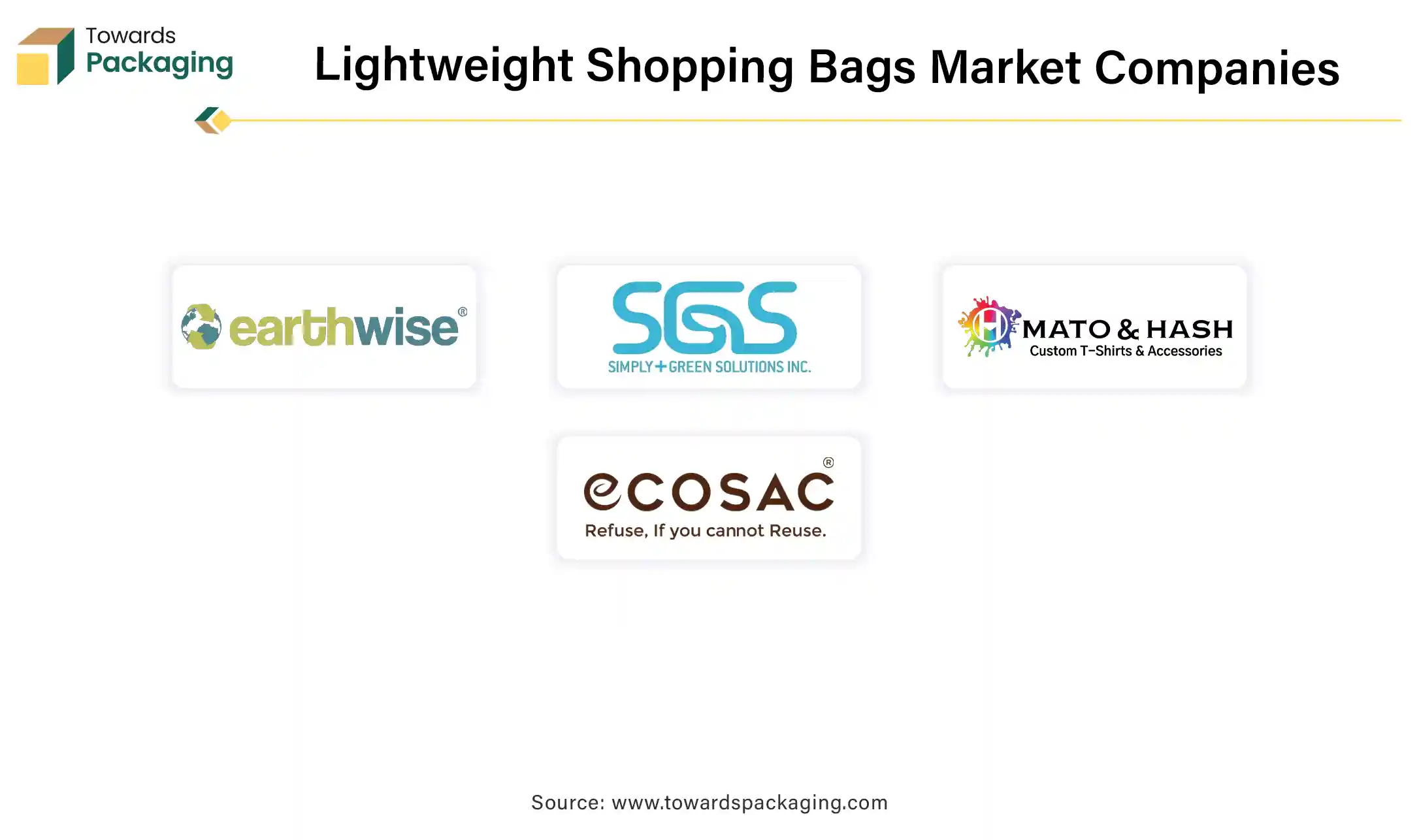April 2025
The lightweight shopping bags market is accelerating, with forecasts predicting hundreds of millions in revenue growth between 2025 and 2034, powering sustainable infrastructure globally.
The lightweight shopping bags market is anticipated to grow at a substantial rate during the forecast period. Lightweight shopping bags are versatile and mostly reusable as well. They are designed to provide a convenient and eco-friendly alternative to the traditional single-use plastic bags. Made from materials such as cotton, jute, polyester and others, these bags are durable, foldable and easy to carry and this makes them suitable for different shopping needs.
These bags come with reinforced handles, water-resistant coatings as well as stylish designs, providing good functionality along with the aesthetics. With the growing focus on the sustainability and reducing the plastic waste, these bags have gained popularity among the environmentally conscious consumers and are widely utilized for groceries, retail shopping and everyday activities.
The rising environmental awareness among consumers along with the stringent regulations and bans on plastic bags is expected to augment the growth of the lightweight shopping bags market during the forecast period. Furthermore, the expansion of the retail and e-commerce sectors coupled with the increasing focus on the product innovation is also anticipated to augment the growth of the market.
Additionally, the growing popularity of corporate branding and promotional giveaways as well as the rising disposable incomes along with the amplified corporate sustainability initiatives and campaigns promoting environmentally responsible products is also projected to contribute to the growth of the market in the near future.
The increasing consumer preferences for sustainable products owing to the increasing plastic waste are anticipated to support the growth of the lightweight shopping bags market during the estimated timeframe. When it comes to sustainability, conscious consumers are involved because they are motivated and think it's important to utilize their financial resources wisely as well as reduce their environmental impact. This group of people is actively acting both at home and when they shop. They are not as materialistic and, whenever feasible, favor purchasing products from the companies that are less harmful to the environment.
Even if they think they already execute a lot, they are open to changing their ways even more to live a more sustainable lifestyle. As per the 2023 survey by the Consumers International, the transition to a sustainable economy is supported by 94% of customers. This is a structural shift is due to the corporations and governments. Governments, corporations, and international organizations are held accountable by more than 80% of consumers for bringing about the necessary changes.

Unlock Infinite Advantages: Subscribe to Annual Membership
Also, in recent years, there has been a surge in worldwide internet searches for sustainable products. Sustainable products are expanding 2.7 times faster than non-sustainable ones, and 77% of companies report higher consumer loyalty as a result of their sustainability initiatives. They firmly feel that their daily actions such as avoiding plastics, purchasing eco-friendly items and decreasing food waste—have a significant impact on the environmental protection. Consequently, reusable, long-lasting, and fashionable shopping bags are gradually replacing disposable plastic bags in their everyday routines. Many celebrities and brands advocate sustainable shopping habits, which increases adoption. As people become more aware of the importance of sustainability, the demand for long-lasting shopping bags is predicted to increase, making it a key driver in the growth of the lightweight shopping bag market.
The presence of the local and unorganized manufacturers is expected to hamper the growth of the lightweight shopping bags market within the estimated timeframe. These manufacturers sell low-cost non-sustainable shopping bags. In many developing regions, small-scale producers and informal businesses continue to manufacture inexpensive plastic or low-quality fabric bags that do not meet environmental standards. These alternatives are widely available and easily accessible as compared to the high-quality reusable bags and this makes them more appealing to the consumers. However, consumers purchasing from these vendors are likely to face issues such as no after-sales assistance, unclear return policies as well as limited accountability, reducing the customer satisfaction.
Furthermore, unorganized markets also lack regulatory oversight, which helps manufacturers to bypass the environmental laws and continue producing such non-biodegradable bags. This creates an uneven competitive landscape, where premium sustainable bag manufacturers face difficulties in gaining the market share due to the higher production costs, compliance requirements and pricing constraints. Also, when compared to branded products from the organized sector, unorganized sector businesses are able to sell their goods at lower prices because of improper branding. As a result, they may improve their market and connect with those in the low-income segment. Consumers in the budget-conscious markets mostly prioritize affordability over sustainability, further slowing the adoption of the eco-friendly alternatives.
Additionally, the fragmentation of this sector makes it difficult for regulatory bodies to implement environmental safety standards in developing nations. Despite growing regulatory regulations and consumer demand for environmentally friendly alternatives, many of these local manufacturers continue to make non-biodegradable plastic bags. This impedes efforts by global and regional players to promote sustainable shopping bags, impeding the transition to greener solutions. However, until strong regulatory frameworks are properly implemented, the existence of domestic manufacturers will continue to hamper the overall expansion of the lightweight shopping bag market.
The rapid growth of the e-commerce sector in emerging economies is expected to create substantial opportunity for the growth of the lightweight shopping bags market in the near future. Countries in Asia-Pacific, Latin America and Africa are witnessing a surge in online shopping due to the increasing internet penetration, the rise of the digital payment systems and improving logistics infrastructure. For instance:
The Mexican Online Sales Association estimates that the domestic e-commerce market grew by 23% from 2021 to 2022, reaching a valuation of USD 26.2 billion. In terms of the growth rate of e-commerce retail, Mexico is ranked in the top five countries worldwide. In 2022, there were 63 million Mexicans using e-commerce, up 5.5 million from 2021. In 2021, women made up 51% of Mexican e-commerce users.
Similarly, e-commerce activity in Argentina has increased tenfold. With more than 37 million internet users, Argentina ranks third in Latin America, after Brazil and Mexico. In 2022, 26 million urban homes in Argentina had access to computers, and 82 percent of them were online, as per the statistics by the Argentine Chamber of Information and Communications (CICOMRA). Nine out of ten individuals use the internet, and nine out of ten use a cell phone. According to the Argentine Chamber of Electronic Commerce (CACE), 95% of Argentina's 19 million connected individuals have made at least one online purchase. In 2022, Argentina saw a tremendous increase in e-commerce of 87%.
As more consumers turn to the e-commerce for their shopping requirements, there is a rising preference for the reusable and environmentally friendly bags for carrying and storing. Many online retailers are now selling lightweight shopping bags as add-ons or packaged with orders, hence improving the sales volume. With online platforms providing competitive pricing, bulk purchase choices and doorstep delivery, purchasing lightweight shopping bags online has grown in popularity.
Artificial Intelligence (AI) is expected to transform the lightweight shopping bags market. Ai helps in optimizing the manufacturing processes, improves the supply chain efficiency as well as customer engagement. AI-powered automation is streamlining production by reducing material waste, improving design customization, and enabling smart quality control, leading to cost-effective and sustainable bag production. In supply chain management, AI based predictive analytics help manufacturers and retailers forecast the demand, manage inventory and at the same time reduce the logistics costs, guaranteeing a steady supply of the lightweight shopping bags. Additionally, AI-driven e-commerce algorithms personalize shopping experiences, recommending eco-friendly bag options to consumers based on their preferences and purchase history, thereby boosting sales.
AI chatbots and virtual assistants further improve the customer interactions with providing instant assistance and product recommendations. Moreover, AI is currently utilized in increasing the sustainability efforts through analyzing consumer behavior, market trends and environmental impact, guiding organizations to adopt greener practices. Due to the growth of the smart packaging choices, AI-integrated shopping bags with QR codes are also expected to appear, helping in traceability and improving the user engagement. As AI evolves, its impact on efficiency and sustainability in the lightweight shopping bag market is projected to grow substantially.
The jute segment is likely to grow at a considerable CAGR during the forecast period. Bags made from jute are among the most sustainable and environmentally friendly bags on the market right now. Natural plant fibers are used to make these bags. They are an excellent alternative for conventional bags because they come in a variety of designs and styles. They can be personalized to meet the demands of the client and are valuable for daily use, travel, as well as shopping, among other things. One of their main advantages over plastic bags that are usually used just once before being thrown away, is that they may be used frequently.
The focus of the modern era is fashion! Individuals idealize other people, their decisions as well as their styles to create their own aspirations. People are thinking that using natural products is a fantastic alternative since celebrities have adopted it. Certain jute handbags, such as designer jute bags, are made specifically to complement the fashion statement. There are plenty of potential customers who would adore these bags because they consist of well chosen, modern and stylish designs. These stylish bags can be resold as giveaway bags, gift bags, or any other celebratory bags by a jute vendor. These factors are likely to support the growth of the segment within the estimated timeframe.
The online segment is expected to grow at a fastest CAGR during the forecast period. This is owing to the widespread penetration of smartphones, internet access, and digital payment systems across the globe. Online channels such as Amazon, Alibaba and Flipkart are increasingly featuring eco-friendly shopping bags in their product listings that help consumers to explore a wide variety of materials, designs and price ranges. Furthermore, the rising trend of direct-to-consumer (DTC) brands focusing on sustainability is also anticipated to contribute to the growth of the segment during the forecast period. Additionally, the social media marketing and influencer-driven promotions are further expected to support the segmental growth of the market in the near future.
North America held substantial market share in the year 2024. This is owing to the government policies and bans on single-use plastic bags in several states are driving demand for reusable and lightweight shopping bags across the region. For instance, Colorado banned single-use plastic bags on January 1, 2024. Single-use paper bags continue to cost $0.10 from retailers. The shops were allowed to give out its stock of plastic checkout bags beyond January 1, 2024, until supplies run out, till June 2024. There is a minimum $0.10 cost for all single-use checkout bags that the shop distributes.
In the United States, twelve states namely California, Connecticut, Hawaii, Delaware, New Jersey, Maine, New York, Oregon, Colorado, Rhode Island, Vermont, and Washington—have banned single-use plastic bags. Rhode Island and Colorado just implemented state-wide prohibitions at the beginning of 2024. Additionally, the growth of the e-commerce along with the growing consumer preference for sustainable materials is also expected to contribute to the regional growth of the market. Furthermore, the growing promotion of the reusable shopping bags from major retailers and brands is also expected to contribute to the regional growth of the market.

Asia Pacific is likely to grow at the fastest CAGR during the forecast period. This is due to the rapid urbanization and population growth as well as the higher disposable income and changing consumer lifestyles in the region. According to the World Population Prospects 2024, there were 4.3 billion people living in the region in 2013, and that number is reached to 4.7 billion in 2023. The population is expected to reach 5.2 billion by 2050. Also, the rapid growth of the organized retail, hypermarkets and department stores along with the Increasing adoption of sustainable lifestyle choices and the surge in online shopping platforms like Myntra, Flipkart and Shopee is likely to contribute to the regional growth of the market. Furthermore, the presence of the cost-effective manufacturing & availability of raw materials coupled with the government incentives and support for the green initiatives is also expected to contribute to the regional growth of the market.


By Material
By End-User
By Distribution Channel
By Region
April 2025
April 2025
March 2025
February 2025